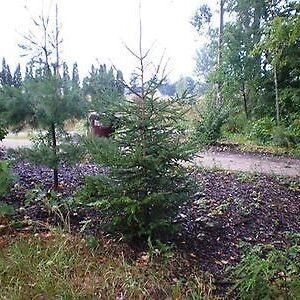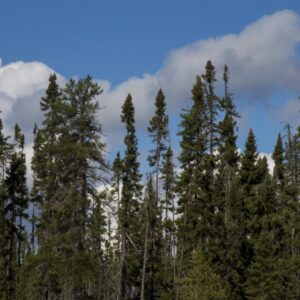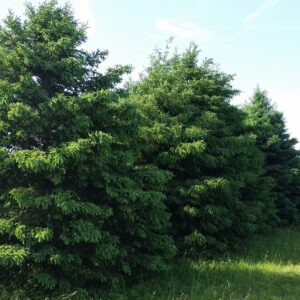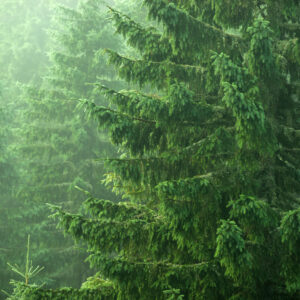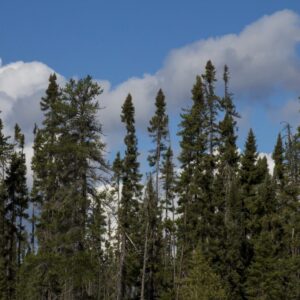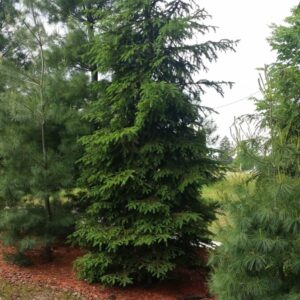General Overview of Spruce Trees
Spruce Trees are some of the most popular trees on the planet. They’re pyramidal trees with whorled branches and thin bark. Many people get confused between pine trees and spruce trees, but they have differences. Spruce trees rule over many parts of the world including the United States and Northern Europe. Spruce Trees are usually found to be in cooler regions of the world, but they are very adaptable to different conditions, which is why you may see them distributed in warmer regions.
Early Stages of Growth for Spruce Trees
For the early stages of growth, Spruce Trees need regular water for the soil to maintain moisture. Spruce trees in the wild can grow up to 75 feet, but when planted, they usually grow 30 to 60 feet. You will have year-round growth for the tree, but with no flowers. Spruce trees usually produce silvery-blue needles. Spruce trees are pretty resilient. They are tolerant to the cold weather, and they can survive through drought, but they thrive with good moisture in the soil. They can tolerate heat to a point.
Planting Spruce Trees
When it comes to planting Spruce trees on your property, you’ll have to make sure you keep a few things in mind. Plant spruce trees 20 to 25 feet apart from each other. Watering the trees regularly will help the soil maintain moisture, so the trees can thrive. Make sure to plant the trees in well-sunlit areas on your land. Dig a whole deep enough to where the burlap is just rounded out of the whole. Also, dig it wide enough for space, so you can fill in the whole and top with fresh soil.
Caring for the Growth
Spruce trees do not need any fertilizer to survive. Spruce trees thrive with mulch around the base, but make sure to pull the mulch about 11 cm. away from the base to prevent rot. When planting, it’s recommended to stake the tree on two sides at least to establish the proper growth. After three years, the tree will be well-established, and you can remove the stakes. Remember, it’s important to water regularly, especially in the summer months.
Life Expectancy of Spruce Trees
In the wild, Spruce trees can live for 200 years. If you’re buying wholesale and planting on your property, they usually have a life expectancy of 40 to 60 years. With the proper care, you’ll have your spruce trees for a very long time. Like any other tree, it will have a long and healthy life if it is taken care of properly throughout its growth.
Interesting Facts About Spruce Trees
Spruce trees are also used widely across the world for distribution, especially for the Christmas season as Christmas trees. Many Christmas tree farms across the country grow different types of Spruce trees for the season.
Black Hills Spruce (Picea glauca densata) – The Black Hills Spruce can grow to a height of 30 to 60 feet and a spread of 15 to 25 feet at maturity. This tree grows at a slow rate per year with less than 12” per year. It has dark green and blue-green needles that are sharply pointed and arranged spirally on the branch.
Black Spruce (Picea mariana) – The Black Spruce does extremely well in wet areas. The needles are blue-green, short and stiff to the point. They are usually pointing upwards and the cones are small and purplish in color. The Black Spruce is tolerant of poor conditions, so it can easily survive some rough winters in your area where you plant them.
Blue Spruce (Picea pungens) – The Blue Spruce is a very common Spruce tree. It grows to be about 50 to 75 feet and has a spread of 10-20 feet at maturity. It has a medium growth rate and does very well in full sun conditions for most of the day. It requires normal moisture and can tolerate very wet conditions to an extent. The reason it is called blue spruce is because it has a unique silvery blue-green color.
Norway Spruce (Picea abies) – This is the fastest growing Spruce tree around. It actually does very well for windbreaks in areas where it is strong. It has dark green needles that are decently short and squared to the touch. This tree grows in a pyramidal shape, and it can reach heights of 40 to 60’.
Red Spruce (Picea rubens) – This type of Spruce tree can grow heights of 60 to 80 feet. The Red Spruce is distinguishable due to its slender new twigs that have a reddish coat. It produces short incurved needles, so it can be distinguished as a Red Spruce.
White Spruce (Picea glauca) – The White Spruce can be expected to grow 40 to 60 feet. Full sun is required for this tree for the best of health, and it grows in acidic and moist, well-drained soils. It can tolerate drought to an extent. It can withstand strong winds, heat, cold, and some shade. It has slightly curved pale green needles.
Find the Right Spruce Tree for Your Needs!
At Cold Stream Farm, we provide a variety of Spruce Trees at wholesale. Spruce Trees are great to have planted on your property because they have the ability to survive different conditions. They are generally slower growing trees with some care during the early stages of growth. If you’re looking to spruce up your property, Spruce trees can be of great use to you.
Contact Cold Stream Farm at 231-464-5809 today for more information!

